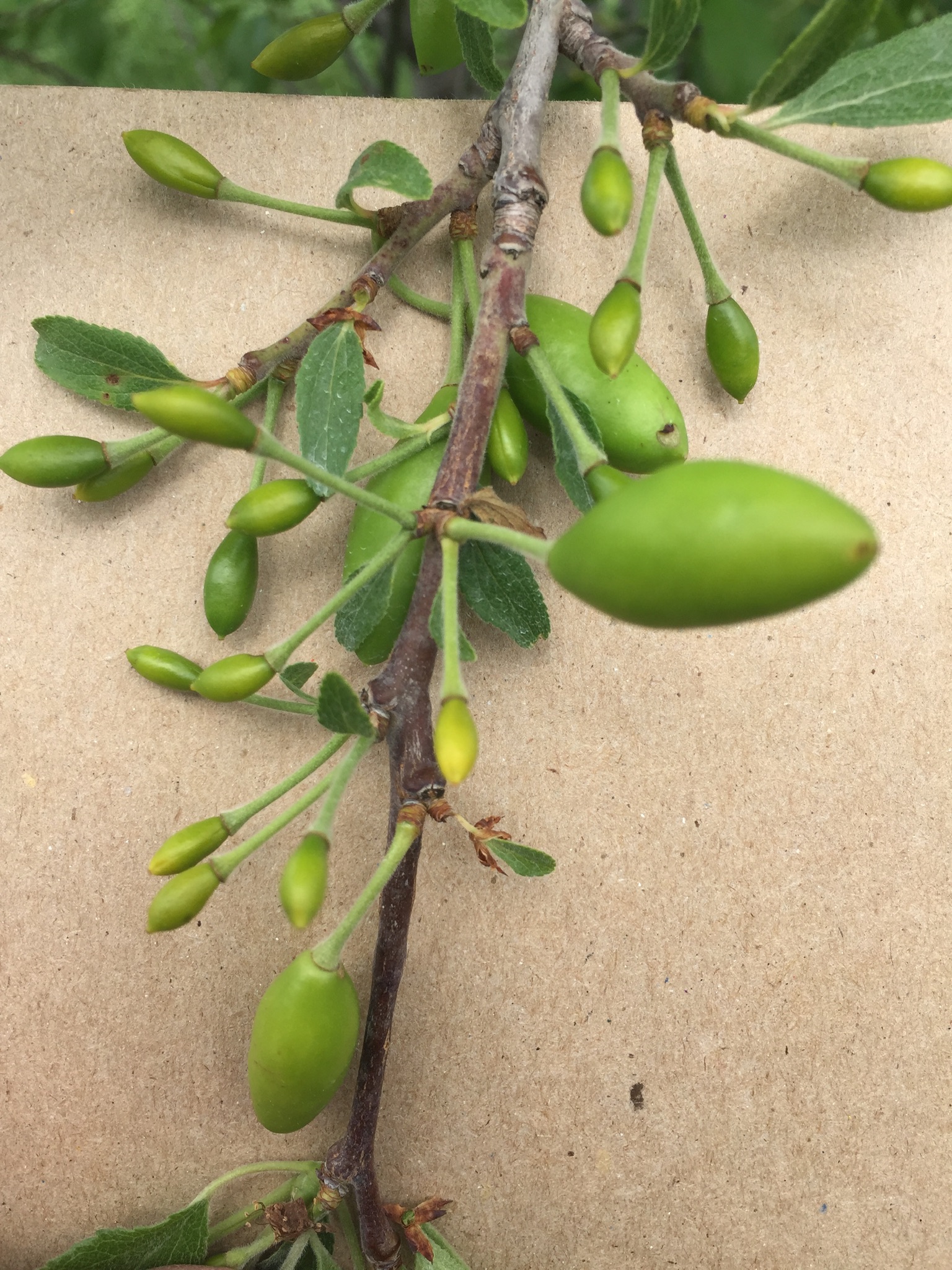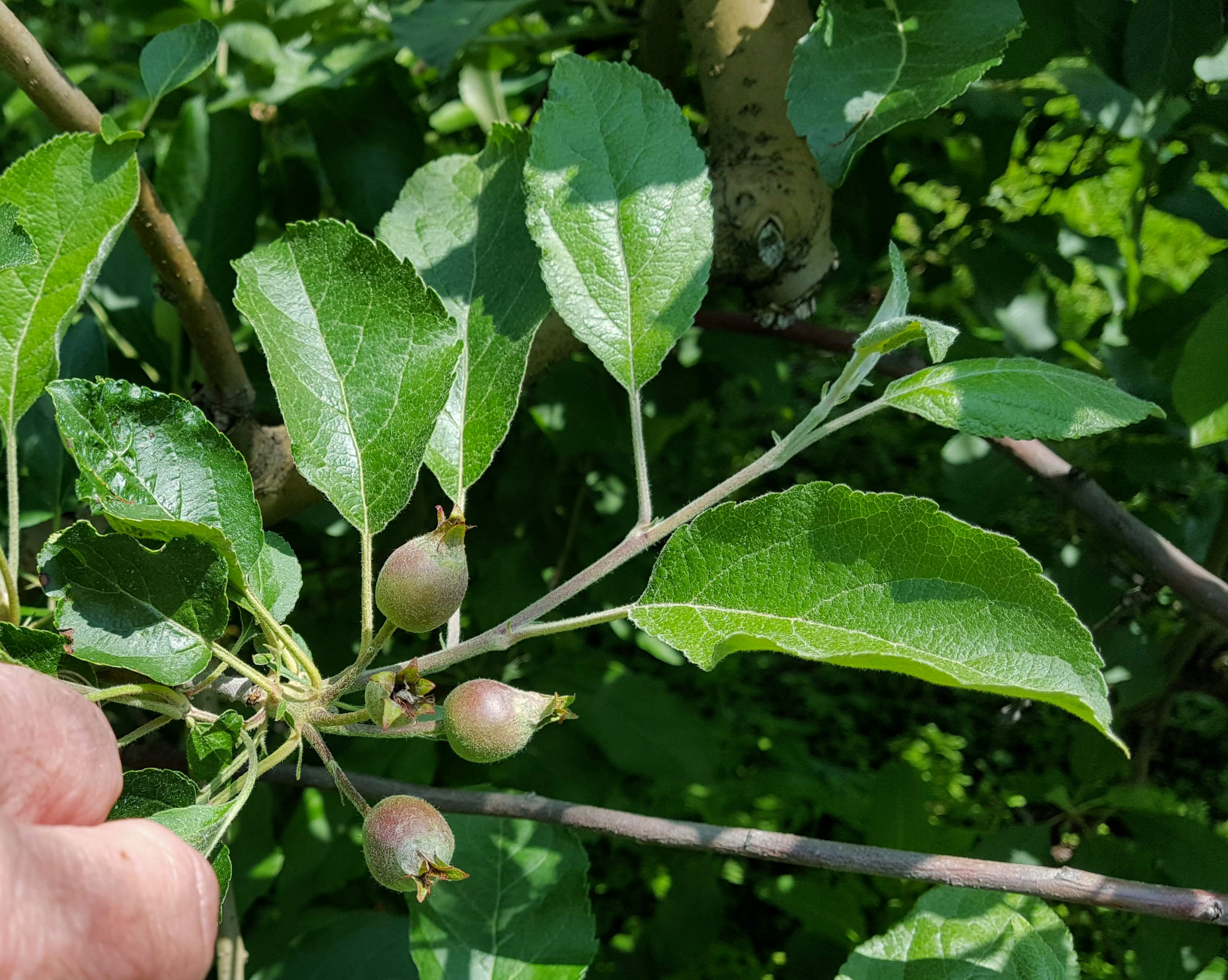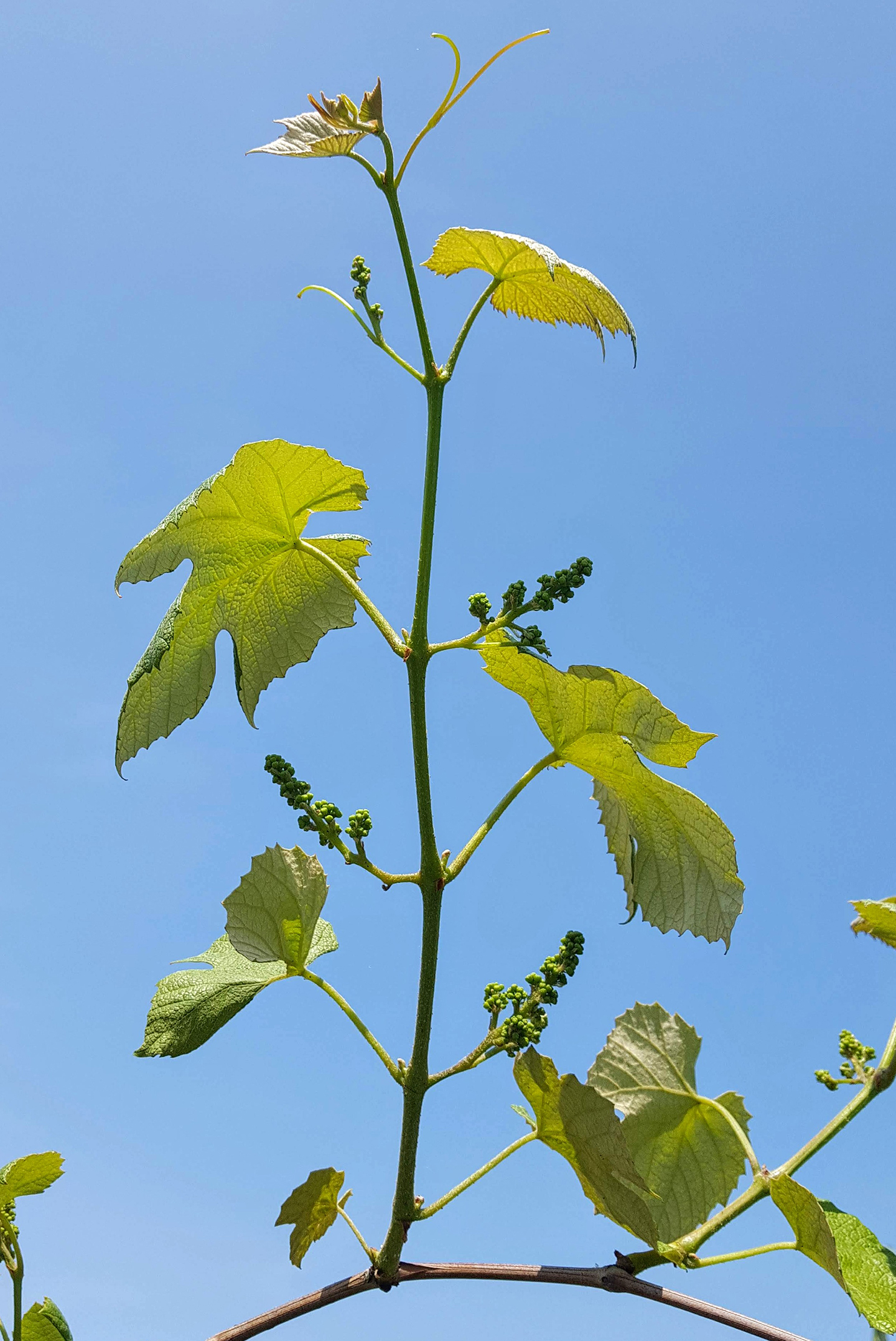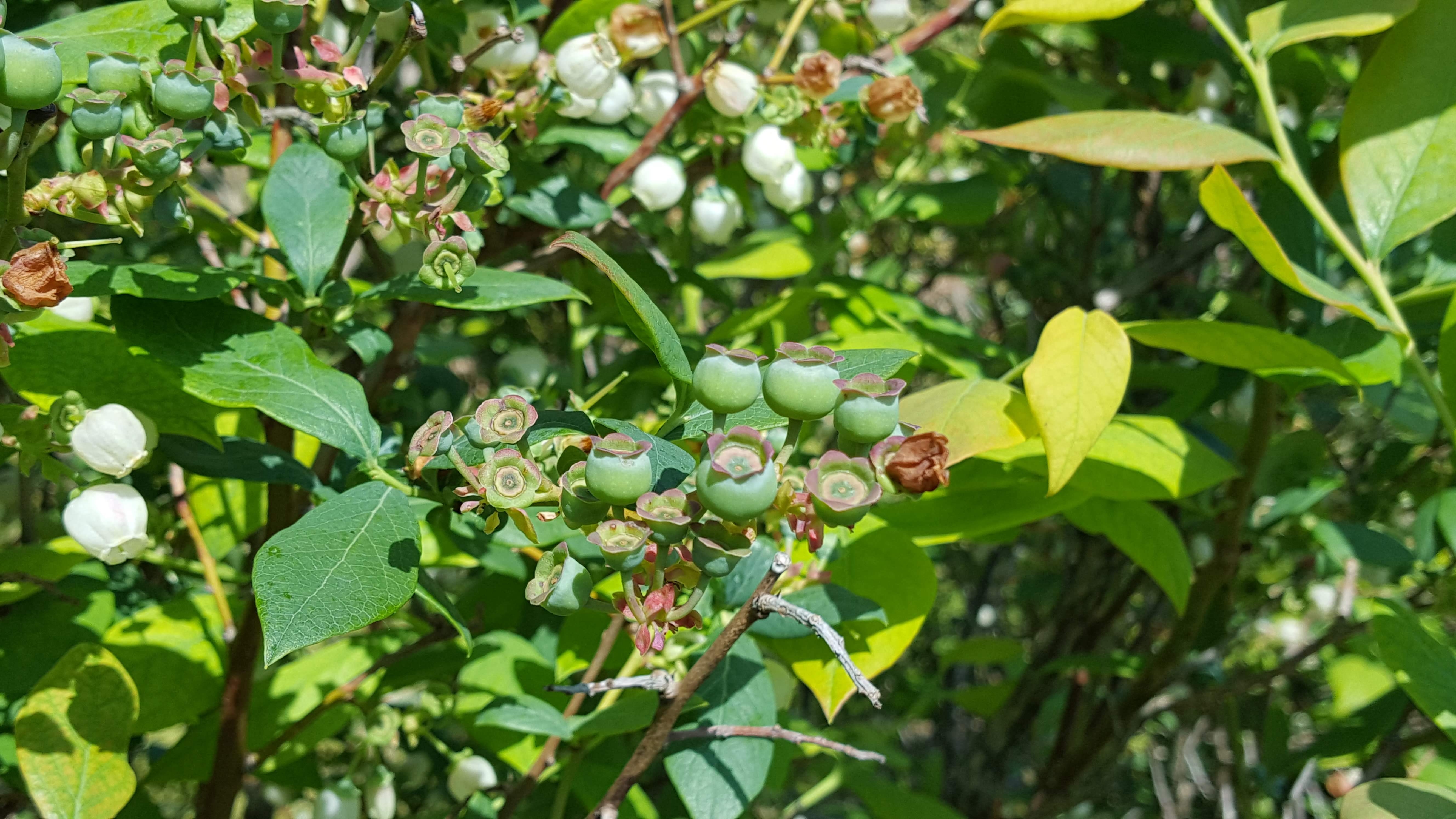Southwest Michigan fruit update – June 4, 2019
Blueberry bloom is ending. Raspberry bloom is underway.

Weather
Last week started cool and dry. Passage of a frontal system brought stormy weather Wednesday and Thursday, May 29-30. Friday and Saturday were warm, with high temperatures around 80 degrees Fahrenheit. Storms late Saturday brought scattered heavy showers. Sunday and Monday were cool and clear. Low temperatures were in the 50’s. Monday morning’s lows were in the mid-30’s.
Precipitation totals for the week ranged from one to two inches. Most of the rain came in storms with heavy downpours. Our wet conditions continue with rainfall totals of 8 to 11 inches across the region since April 1. The forecast for this week is for warmer conditions, with highs in the upper 70s and lows upper 50s, a little cooler than normal.
There is a good chance of rain Tuesday though Wednesday. Clear conditions should prevail into early next week. Soils are wet. Plants are fully leafed out with rapid shoot growth. Soils have warmed up with soil temperatures in the 60s. There is standing water in poorly drained fields. We picked up about 121 GDD base 42 and 72 GDD base 50, which was less than last week. We continue to be about week behind normal.
Southwest Michigan GDD Summary from March 1 through June 2, 2019
|
Station |
GDD 42 F |
GDD 45 F |
GDD 50 F |
|---|---|---|---|
|
Benton Harbor (SWMRC) |
722 |
563 |
356 |
|
Lawton (Lawton) |
755 |
594 |
382 |
|
Fennville (TNRC) |
619 |
472 |
287 |
|
Average for the SW region |
735 |
576 |
366 |
|
Accumulation last week |
121 |
103 |
72 |
Check out the new animated weather forecasts from Jeff Andresen at the weather tab in the Michigan State University Extension Fruit & Nuts Page. Articles and other regional reports can be found at the Fruit News page.
Tree fruit
June drop in stone fruit is ending and the crop is becoming easy to estimate. Generally the crop looks light reflecting the cool, rainy conditions during bloom. June drop is still underway in apples and pears. Plum curculio is out and laying eggs. Signs of winter injury are easier to see as healthy plants are fully leafed out and rapid shoot growth is underway. Injured plants have poor growth and some limbs are collapsing.
Apricots are scarce. The fruit are an inch in diameter.
Peach and nectarine fruit are up to 14 mm in diameter and big enough to attract tarnished plant bug and plum curculio. First catch of Oriental fruit moth was on May 6 at the Trevor Nichols Research Center, and the flight has been ongoing since then. It is time to put on any necessary larval control sprays to protect developing tree shoots. Shoot flagging due to OFM entries should show up soon. More trunk cracking is being reported, presumably due to the January low temperatures. Damaged trunks and weakened trees can be especially attractive to borers. Trunk sprays for protection against peach tree borers should be going on soon.
Sweet and tart cherries growth has paused for pit hardening (sweets 13 mm and tarts 11 mm). The pits are hard and it looks like June drop is finished. The fruit are big enough to be attractive to plum curculio egg laying and feeding, with some damage noted over the past two weeks. Now that the leaves are out, cherry leaf spot management is needed.

In plums, Japanese plums are at 17 mm and the crop is light for most sites. European plums are at 15 mm diameter in central Berrien County, with significant drop underway. Young plum fruit and foliage are tender and are prone to russeting from captan, especially under cool, slow drying conditions.
Apple fruit are growing rapidly. Gala, Golden Delicious, Red Delicious range from 14 to 16 mm, Honeycrisp is at 15 mm, and Zestar are 14 mm in diameter. June drop has started for some varieties. Apples will soon leave the primary apple thinning window when fruit are easiest to thin. With high temperatures forecast to be in the 70s this week the trees will not be stressed. New leaves are very succulent with the cloudy moist weather. Thinners should be absorbed very well. Use Cornell carbohydrate thinning model to estimate the susceptibility of apple fruit to chemical thinning sprays and adjust thinning rates according. Base your decisions on fruit size and the predicted weather.

Do not wait too long for optimal conditions. Once apples are larger than 18 mm in diameter, they become harder to thin effectively. Apply your thinners sprays soon. The Enviroweather Maryblyt model indicated that symptoms for infections on May 25 and 27 should be appearing at the end of this week. Use of Apogee is an option now for reducing the susceptibility of apple growth. The rate depends on the variety and age of tree.
Apple scab symptoms have been showing up over the last few weeks. We are nearing the end of scab season and growers will want to look for scab lesions on the leaves and fruit to decide to drop fungicides from their cover sprays. Codling moth biofix has been set for some orchards in the region. Mating disruption dispensers need to be up where this management option is being used. There are many different options for controlling the first generation of codling moth. Plum curculio monitoring should also be in place. A few colonies of rosy aphids are being detected in Golden Delicious leaves.
Pear fruit are sizing. Bartlett and Harrow Sweet fruit are 14 mm. The first generation codling moth is not a problem in hard pears, but plum curculio will lay eggs in pears. The time of rapid shoot growth with succulent leaves is the primary treatment window for pear psylla.
Small fruit
Grapes are moving quickly. Shoots are 4 to 10 inches long, with 5 to 8 leaves. Flower clusters are elongating and separating. We can expect bloom in about a week.

Growers will want to focus one last pre bloom spray on disease management before bloom. The bloom sprays are the most important sprays for controlling diseases on the berries. Growers need to use materials or a mix of fungicides to control all the major fruit diseases, downy mildew, phomopsis, powdery mildew and black rot, which can infect new green tissue as it is exposed.
Wild grapes are blooming now. We are catching grape berry moth. Bloom in wild grapes is used to set the Grape berry moth model on Enviroweather and determine the spray timing for treating the second and third generations of this pest. Wild grape bloom began about May 31 in central Berrien County and June 1 in Van Buren County. Rose chafer should appear soon.

Blueberry fields are past full bloom. Early varieties finished blooming. Berries are 8 to 10 mm in diameter. Bloom continues in fields located to the north or closer to the Lake. Bloom looked good across the region. Cherry fruitworm and cranberry fruitworm have both been caught, but trap catches have been sporadic and few sites have set a biofix. GDD prediction for cherry fruitworm biofix was this past week and cranberry fruitworm GDD biofix is predicted for this coming week. The disease focus is on anthracnose as the small green fruit is very susceptible to infection, which does not appear until the fruit begins to ripen.
Strawberry bloom is ending and we are seeing thimble-sized green fruit and the largest are about an inch in diameter. Growers need to be alert of insect pests such as tarnished plant bug and spittle bug. Western flower thrips are causing bronzing of early fruit.
Bramble bloom has begun. Wild blackberries and black raspberries were blooming last week and continue to bloom now.
Cranberries have started shoot growth and the flower buds are in the hook stage. Bloom is about a week away. This is the time for the prebloom spray to prevent early diseases and reduce disease inoculum.
Upcoming meetings
- Our next Monday fruit IPM meetings will be Monday, June 10, at Fruit Acres Farms 3452 Friday Rd, Coloma, Michigan, at 5 p.m. These meetings are free and open to all. We review the current conditions in fruit crops and discuss pest control options with growers. Two Michigan RUP applicator recertification credits are available at these meetings.
- A Blueberry Spotted Wing Drosophila Management Meeting is planned for Wednesday, June 5, at the Southwest Michigan Research and Extension Center (SWMREC) near Benton Harbor from 9 a.m. to 4 p.m. Register here.
- A Pre-Harvest Strawberry meeting is being held in Southeast Michigan on June 6, 2019, from 3-5 p.m. to cover common insect and disease issues, variety selection, weed control, fungicide resistance before harvest. The field meeting will be at Whittaker's Berry Farm, located at 6724 Todd Rd, Ida, MI 48140 Strawberry producers and those interested in strawberry production are encouraged to attend the field meeting, which will take place rain or shine, and include four stops in the field. There is no pre-registration necessary and no fee to attend.
- Viticulture Day is June 13 at the Southwest Michigan Research and Extension Center (SWMREC) near Benton Harbor. This event is organized by the Michigan Grape Society and hosted by Michigan State University’s SWMREC.
- There is an Intensive Fire Blight Fruit School on June 17 at the Northwest Michigan Horticultural Research Center. This workshop includes speaker from around the United States and is well worth attending.
Related articles:
Southwest Michigan fruit update – May 28, 2019
Crop specific links:
Scouting for Blossom blight of fire blight in apples
How to use Enviro-weather’s apple scab tool
Codling moth management options for Michigan apples
Using the MSU Enviroweather grape berry moth model
Preparing for rose chafer management in vineyards
Using degree days to predict pest and crop development in blueberries
Fruitworm control in blueberries for 2019
Gibberellin use for fruit set on blueberries



 Print
Print Email
Email




